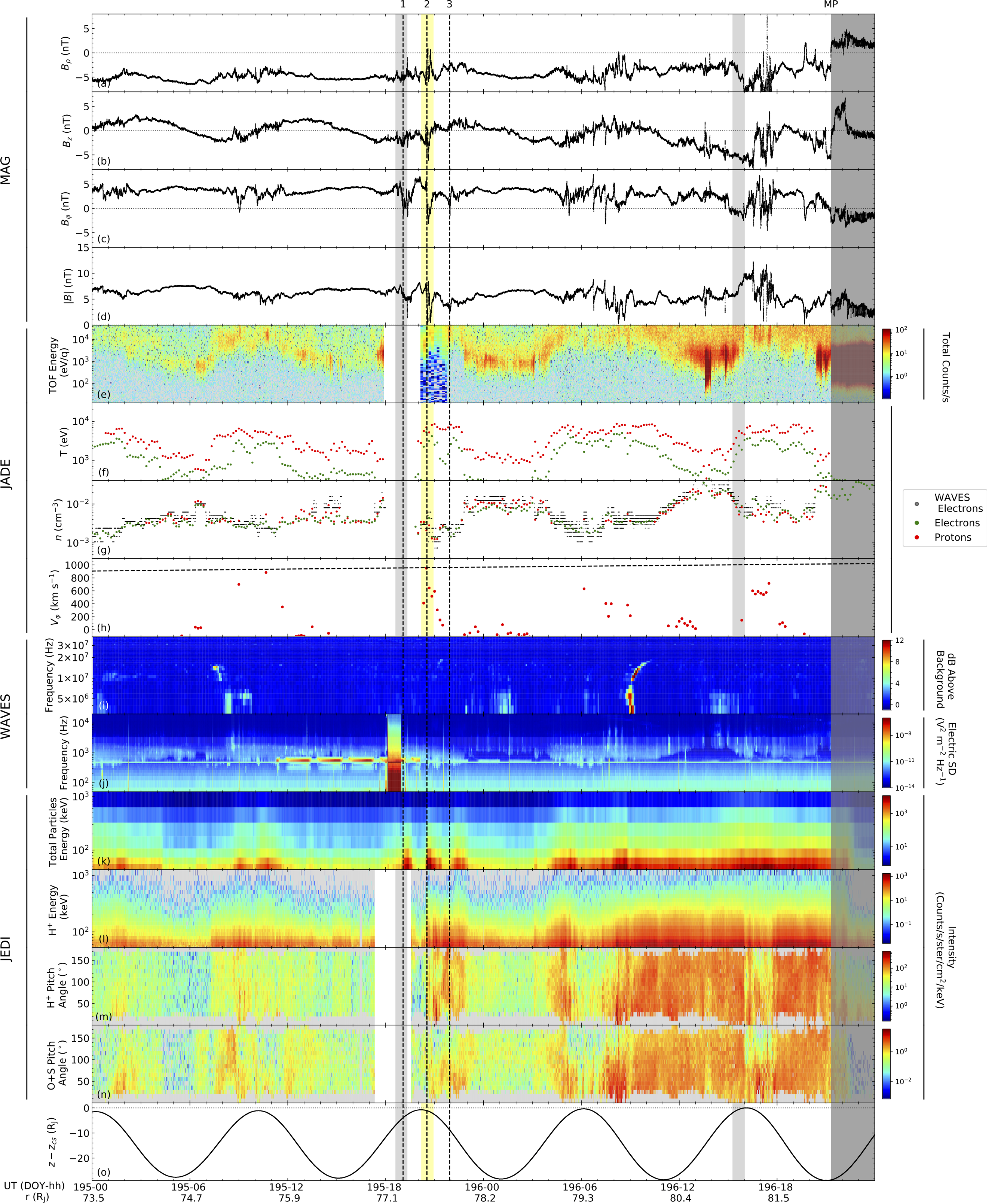MIST
Magnetosphere, Ionosphere and Solar-Terrestrial
Simultaneous Observation of an Auroral Dawn Storm with the Hubble Space Telescope and Juno
By Ben Swithenbank-Harris (University of Leicester)
Jupiter’s dawn storms are bright enhancements of the dawn flank of the main auroral emission, and produce the most powerful auroral events in the Solar System. These events have been observed numerous times with the Hubble Space Telescope (HST), and more recently by the Juno spacecraft, but their exact origins and related magnetospheric dynamics are not fully understood. For example, although consistent observations of this phenomena near local dawn suggested a relationship with the impinging solar wind, previous studies have shown no correlation between storm occurrence and solar wind conditions. Additionally, prior to the arrival of the Juno spacecraft at Jupiter in July 2016, auroral observations of dawn storms had not been supported by magnetospheric data from spacecraft in the dawn magnetosphere.
In this work, we present the first simultaneous magnetospheric in situ and auroral observations of the onset of a dawn storm. Magnetometer readings reveal brief reversals in the azimuthal magnetic field and decreases in the radial and total field magnitudes around the time of storm onset (Figure 1a-d). Furthermore, concurrent JADE (Figure 1e-h) and JEDI (Figure 1k-n) particle measurements reveal an increase in high energy particle populations and acceleration of magnetospheric protons towards corotational speeds, as well as long-lived hot plasma populations which persist in the outer magnetosphere beyond the expected lifetime of the enhanced auroral emissions. Ultimately, we associate this dawn storm with significant plasma heating and acceleration following reconnection at earlier local times.

Figure 1: Overview of the Juno in situ data, showing (1a-d) the radial, north-south, azimuthal and total magnetic field strength (nT) in cylindrical polar coordinates, (1e-h) the JADE ion time-of-flight energy spectra, electron and proton temperatures (K), number densities (cm-3) and proton azimuthal velocities (km s-1), (1i-j) Waves high frequency and electric field continuum emissions, (1k-n) JEDI particle spectra showing the total particle and proton energies (k-l) and the proton and heavy ion pitch angle distributions (m-n), (1o) and the expected spacecraft distance from the centre of the current sheet (RJ), calculated using the method of Khurana (1992). The light grey shaded regions show the times of HST observations, with the dawn storm interval denoted by the yellow shaded region. The darker grey shading denotes a magnetopause crossing, and the three dotted vertical lines mark the times of several successive reversals in the azimuthal magnetic field.
Please see the paper for full details:
Swithenbank‐Harris, B.G., Nichols, J.D., Allegrini, F., Bagenal, F., Bonfond, B., Bunce, E.J., et al. (2021). Simultaneous Observation of an Auroral Dawn Storm with the Hubble Space Telescope and Juno. Journal of Geophysical Research: Space Physics, 126, e2020JA028717. https://doi.org/10.1029/2020JA028717